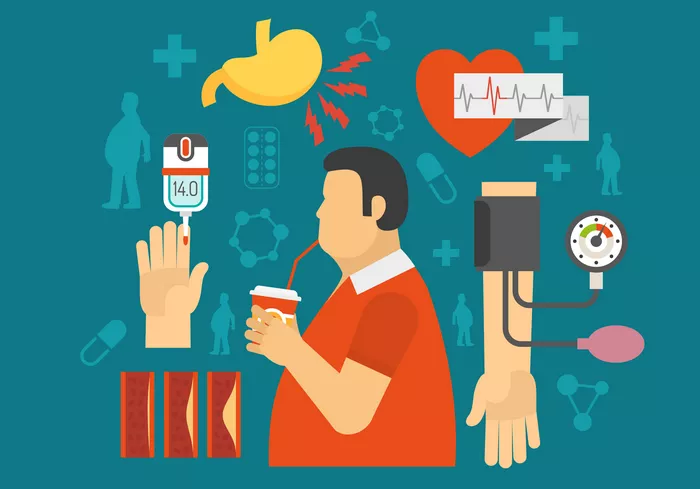Diabetes mellitus is a complex metabolic disorder characterized by chronic hyperglycemia (elevated blood glucose levels) resulting from defects in insulin secretion, insulin action, or both. While diabetes can lead to various complications over time, understanding the condition without the presence of complications is crucial for effective management and prevention of future issues. This article explores the fundamentals of diabetes mellitus, focusing on its definition, types, pathophysiology, diagnosis, management, and the importance of preventing complications.
What is Diabetes Mellitus?
Definition and Overview
Diabetes mellitus is defined as a group of diseases that result in high blood sugar (too much glucose in the blood). It occurs when the body cannot produce enough insulin, does not use insulin effectively, or both. Insulin is a hormone produced by the pancreas that helps glucose from food enter cells to be used for energy.
Types of Diabetes Mellitus
Diabetes mellitus is primarily classified into three main types:
Type 1 Diabetes Mellitus: An autoimmune condition where the immune system attacks insulin-producing beta cells in the pancreas, leading to little or no insulin production. This type usually develops in childhood or adolescence but can occur at any age.
Type 2 Diabetes Mellitus: The most common form of diabetes, primarily characterized by insulin resistance and relative insulin deficiency. It is often associated with obesity, physical inactivity, and family history. Type 2 diabetes typically develops in adulthood but is increasingly being diagnosed in children and adolescents.
Gestational Diabetes Mellitus: A form of diabetes that occurs during pregnancy and typically resolves after childbirth. However, women with gestational diabetes have a higher risk of developing type 2 diabetes later in life.
Pathophysiology of Diabetes Mellitus Without Complications
Understanding the pathophysiology of diabetes is essential to grasp how the disease manifests without complications.
Type 2 Diabetes Pathophysiology
In type 2 diabetes, several key mechanisms contribute to the development of hyperglycemia:
Insulin Resistance: In type 2 diabetes, the body’s cells (muscle, fat, and liver cells) become resistant to the effects of insulin. This means that even though insulin is present, it cannot effectively facilitate the uptake of glucose from the bloodstream into the cells.
Beta Cell Dysfunction: Over time, the pancreas’ insulin-producing beta cells become dysfunctional, leading to inadequate insulin secretion in response to increased blood glucose levels. This impairment can progress over years, contributing to worsening hyperglycemia.
Increased Hepatic Glucose Production: The liver plays a critical role in glucose metabolism. In type 2 diabetes, the liver may produce and release excessive amounts of glucose into the bloodstream, further exacerbating hyperglycemia.
Adipose Tissue Dysfunction: In obesity, the adipose tissue becomes dysfunctional, leading to increased lipolysis (breakdown of fat) and elevated free fatty acids, which can further contribute to insulin resistance.
Metabolic Syndrome
Individuals with type 2 diabetes often exhibit features of metabolic syndrome, which includes a cluster of conditions such as hypertension, dyslipidemia (abnormal lipid levels), abdominal obesity, and insulin resistance. While metabolic syndrome increases the risk of cardiovascular disease and other complications, individuals can have diabetes without these complications if managed appropriately.
Clinical Presentation of Diabetes Mellitus
Symptoms of Diabetes Mellitus
While diabetes can lead to various symptoms, individuals with diabetes mellitus without complications may experience mild or no symptoms initially. Common symptoms may include:
Increased Thirst (Polydipsia): A frequent urge to drink more fluids due to elevated blood sugar levels leading to osmotic diuresis (increased urination).
Increased Urination (Polyuria): The need to urinate more often, especially at night, as excess glucose is excreted in the urine.
Increased Hunger (Polyphagia): Despite eating enough or more food, individuals may feel constantly hungry due to the inability of glucose to enter cells.
Fatigue: Persistent tiredness or fatigue due to inadequate glucose utilization for energy.
Blurred Vision: Fluctuating blood sugar levels can lead to changes in fluid levels in the eye, affecting vision.
Diagnosis of Diabetes Mellitus
Diagnosing diabetes is crucial for early intervention and management. The American Diabetes Association (ADA) recommends the following criteria for diagnosis:
Fasting Plasma Glucose (FPG) ≥ 126 mg/dL (7.0 mmol/L): Measured after no caloric intake for at least 8 hours.
Random Plasma Glucose ≥ 200 mg/dL (11.1 mmol/L): In a patient with classic symptoms of hyperglycemia or hyperglycemic crisis.
Oral Glucose Tolerance Test (OGTT): 2-hour plasma glucose ≥ 200 mg/dL (11.1 mmol/L) during a 75 g OGTT.
Hemoglobin A1c (HbA1c) ≥ 6.5% (48 mmol/mol): Indicates average blood glucose levels over the past 2-3 months.
If the results are inconclusive, a repeat test is necessary to confirm the diagnosis.
Classification of Diabetes Mellitus Severity
Diabetes mellitus can be classified based on severity, which impacts management and prognosis:
Controlled Diabetes: Patients whose blood glucose levels are well-managed and within target ranges through lifestyle modifications and/or medications.
Uncontrolled Diabetes: Patients whose blood glucose levels remain elevated despite treatment efforts, increasing the risk for complications over time.
Management of Diabetes Mellitus Without Complications
Effective management of diabetes mellitus is essential to maintain blood glucose levels within target ranges and prevent the development of complications. This involves a multifaceted approach that includes lifestyle modifications, pharmacological treatment, regular monitoring, and education.
1. Lifestyle Modifications
Dietary Changes
Adopting a balanced diet is crucial for managing diabetes effectively. Key dietary strategies include:
Carbohydrate Management: Monitoring carbohydrate intake to maintain stable blood glucose levels. This may involve counting carbohydrates or using the glycemic index to choose foods.
Increased Fiber Intake: Consuming whole grains, fruits, vegetables, and legumes to improve glycemic control and reduce cholesterol levels.
Healthy Fats: Prioritizing unsaturated fats (e.g., olive oil, avocados, nuts) while limiting saturated and trans fats to reduce cardiovascular risk.
Portion Control: Being mindful of portion sizes to avoid overeating and manage weight effectively.
Physical Activity
Regular physical activity is vital for managing diabetes and overall health. Recommended physical activity guidelines include:
Aerobic Exercise: Aim for at least 150 minutes of moderate-intensity aerobic activity per week, such as brisk walking, cycling, or swimming.
Strength Training: Incorporate resistance exercises at least two days per week to improve insulin sensitivity and promote muscle mass.
Daily Activity: Encourage incorporating more movement into daily routines, such as walking, gardening, or using stairs instead of elevators.
2. Pharmacological Management
When lifestyle modifications are insufficient to achieve target blood glucose levels, pharmacological treatment may be necessary. Several classes of medications are commonly used in managing type 2 diabetes:
Oral Medications
Metformin: Often the first-line medication, metformin enhances insulin sensitivity, reduces hepatic glucose production, and improves glycemic control.
Sulfonylureas: These medications stimulate the pancreas to produce more insulin, aiding in lowering blood glucose levels.
DPP-4 Inhibitors: These drugs enhance the body’s incretin hormones, increasing insulin release and decreasing glucagon levels, leading to improved glycemic control.
SGLT2 Inhibitors: These medications promote the excretion of glucose through the urine, helping to lower blood glucose levels and reduce cardiovascular risks.
GLP-1 Receptor Agonists: These injectable medications increase insulin secretion, decrease glucagon secretion, and promote satiety, aiding in weight loss.
Insulin Therapy
In some cases, insulin therapy may be required, especially if oral medications do not achieve adequate glycemic control. Insulin can be administered via injections or insulin pumps, and it may be used alone or in combination with other diabetes medications.
3. Regular Monitoring and Self-Management
Regular monitoring of blood glucose levels is essential to assess the effectiveness of the management plan and make necessary adjustments. Key monitoring strategies include:
Self-Monitoring of Blood Glucose (SMBG): Encouraging patients to check their blood glucose levels regularly using a glucometer to understand their glycemic patterns and respond accordingly.
Continuous Glucose Monitoring (CGM): For some patients, using CGM systems can provide real-time glucose data, helping to make informed decisions about lifestyle and treatment.
4. Patient Education and Support
Educating patients about diabetes management is critical for empowering them to take an active role in their health. Key components of patient education include:
Understanding Diabetes: Providing information about the disease process, its causes, and the importance of maintaining blood glucose levels within target ranges.
Goal Setting: Collaborating with patients to set realistic and achievable health goals, such as target blood glucose levels, weight loss, or increased physical activity.
Support Systems: Encouraging patients to seek support from healthcare providers, diabetes educators, family, and peer support groups to foster a positive environment for managing their condition.
Preventing Complications of Diabetes Mellitus
While diabetes mellitus can exist without complications, it is essential to adopt proactive strategies to prevent the development of long-term complications.
1. Regular Health Check-ups
Regular health check-ups and screenings are crucial for early detection and management of potential complications. Recommended screenings include:
Blood Pressure Monitoring: Regular monitoring of blood pressure to manage hypertension, a common comorbidity in diabetes.
Lipid Profile Testing: Evaluating cholesterol and triglyceride levels to assess cardiovascular risk and make necessary lifestyle or medication adjustments.
Kidney Function Assessment: Monitoring kidney function through tests such as serum creatinine and urine albumin to detect early signs of kidney disease.
Foot and Eye Examinations: Regular foot exams to detect neuropathy or ulcers and annual eye exams to screen for diabetic retinopathy.
2. Managing Comorbid Conditions
Individuals with diabetes often have comorbid conditions such as hypertension and dyslipidemia. Effective management of these conditions is essential to reduce the overall risk of complications. Strategies include:
Antihypertensive Medications: If hypertension is present, prescribing appropriate antihypertensive medications to achieve target blood pressure levels.
Lipid-Lowering Therapy: Utilizing statins or other lipid-lowering medications to manage dyslipidemia and reduce cardiovascular risk.
3. Promoting Healthy Lifestyle Choices
Encouraging healthy lifestyle choices is crucial for preventing complications and improving overall health. Key strategies include:
Weight Management: Supporting patients in achieving and maintaining a healthy weight through diet and exercise to improve insulin sensitivity and glycemic control.
Smoking Cessation: Encouraging patients to quit smoking, as tobacco use significantly increases the risk of cardiovascular disease and other complications.
Stress Management: Teaching stress management techniques such as mindfulness, meditation, or yoga to help manage stress and its impact on blood glucose levels.
4. Utilizing Technology and Tools
Advancements in technology can significantly enhance diabetes management and complication prevention. Tools and technologies include:
Mobile Apps: Utilizing diabetes management apps to track blood glucose levels, dietary intake, physical activity, and medication adherence.
Telemedicine: Engaging in telehealth services for regular check-ins with healthcare providers, ensuring ongoing support and monitoring.
The Importance of Psychological Support
Living with diabetes can pose psychological challenges, including anxiety, depression, and diabetes distress. Addressing mental health is vital for effective diabetes management. Key considerations include:
Psychological Assessments: Conducting routine screenings for depression and anxiety in individuals with diabetes to identify those in need of support.
Counseling and Therapy: Offering counseling services or referrals to mental health professionals to provide necessary psychological support.
Support Groups: Encouraging participation in diabetes support groups or communities to foster connection and shared experiences among individuals with diabetes.
See also:What is Controlled Type 2 Diabetes?
Conclusion
Diabetes mellitus without complications represents a manageable condition that requires a comprehensive and proactive approach. By understanding the underlying mechanisms, adopting lifestyle modifications, utilizing pharmacological treatments, and promoting regular monitoring, individuals with diabetes can maintain optimal health and prevent the onset of complications. With ongoing education, support, and appropriate interventions, the journey of managing diabetes can be empowering and fulfilling, allowing individuals to lead healthy, active lives.
Related topics:



























